The Christmas meal is serious business.
The French take their Christmas meal very seriously. French families rarely go out to a restaurant for their Christmas meal, they eat at home. The French tend to go all out and splurge for Christmas when it comes to food, and the meal is almost as important as the gifts themselves. Families will spend what needs to be spent to ensure that they enjoy a meal of the finest quality, and the meal is sure to feature an abundance of delicious dishes that have been planned long in advance. Every family has of course their own habits and ways to celebrate. Below is a list of the most traditional and thought-after dishes that you would very likely find yourself having if you happened to be at a French table during Christmas.
The main festive meal for the French is on Christmas Eve. The traditional meal is a very substantial and long proceeding – which lasts long past midnight into the early hours of December 25th. In other words don’t expect to spend any less than 5 hours at the dinner table!
It all starts with l’apéritif, usually Champagne for the occasion, accompanied by bite-size cocktail food, followed by several entrées of foie gras, oysters, and/or salmon. Main dishes will follow and include meats such as turkey, fowl or even beef. Next in line is the large and exquisite cheese platter, followed by desserts. All along you will be served a selection of wines carefully selected to accompany each dish, and the final touch: the digestif !
Food is accompanied by good conversation. The French love to debate about everything and you can expect lively conversations throughout the meal, in fact the longer the meal, the livelier the conversations!
Some important tips.
Here are a couple of tips to keep in mind if you plan on hosting a “French Christmas dinner” yourself:
- Rule number 1, choose products of the highest quality. Dishes may be simple and may not require extravagant cooking skills and techniques, but ingredients will have been selected for their finest quality. Don’t go for the cheap options.
- Rule number 2, presentation is essential. Be it for setting the table, or presenting the dishes, a lot of work is put in to make sure that table and dishes look spectacular.
- Rule number 3, the meal follows a specific order: apéritif, entrées (starters), plat principal (main dish), cheese platter, desert, digestif. It would be considered a “faux pas” to not follow these steps!
A little history…
Traditionally, the Christmas meal was divided into two parts: A light meal was eaten before midnight mass. It was called “le repas maigre” – the ‘light meal’. Depending on the regions it was customary to have a small soup with some bread or fish, but no meat. Midnight mass marked the end of the Advent period. The main meal was eaten after midnight mass, it was called “le repas gras” – the ‘heavy meal’. This was the festive and more substantial meal which included dishes made of porc, such as boudin, sausages or other meats duck or geese, and fowl. Deserts included pies, tarts, beignets and biscuits.
Regional traditions.
Depending on which region you find yourself in at Christmas, you will find differences as to what is served. For example in Provence the tradition is to serve 13 desserts. Alsace is famous for its Christmas patisseries and biscuits. In Alsace you will eat “bredeles” -little Christmas biscuits, “leckerli” – a sweet bread made with spices, or even Kouglof – a type of Alsatian brioche. Traditions and habits differ according to regions. However, the list below is a general indicator of the most popular dishes you could expect to find at a French Christmas table.
La table.
Before we get to the food, let’s mention again the importance of a beautifully decorated table. Setting a pretty table, and making it look festive is a very important part of the Christmas meal. The table has to be dressed for the occasion. Presentation is essential. Families bring out their luxury dinnerware and finest china on Christmas Day.
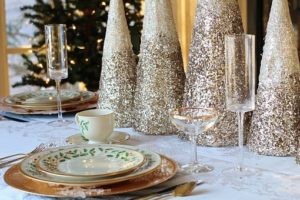
L’apéritif. Drinks and “amuses bouches”.
L’apéritif is an institution in French culture. And at Christmas time, more than at any other time, “l’apéro” is an integral part of the meal protocol. Starting your Christmas dinner without first having an aperitif would be unheard of.
For l’aperitif you will likely be served: champagne, wine, kir, a selection of liquors, even perhaps a vin chaud (mulled wine), accompanied by some cocktail finger foods and a fine selection of nibbles.
- Mulled wine recipe. This is a wine which is served warm and mixed with spices such as nutmeg, anise, cloves and cinnamon. It is only served at Christmas time, and is particularly popular in the region of Alsace. https://cooking.nytimes.com/recipes/1019799-mulled-wine
- Kir royal is a popular aéperitif. Recipe – mix 1cl of creme de cassis in a glass of champagne, and serve immediately.
L’apéritif is served with cocktail food. Caviar is often served in bite-sized portions on toasts for l’aperitif.
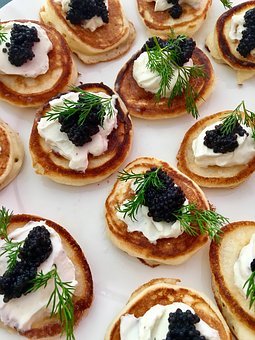
Caviar and blinis recipe
Entrées and hors d’oeuvres. The appetizers.
Foie gras – duck or goose liver.
Foie gras is a must and will be found on most French Christmas tables. In fact 50% of fois gras in France, is sold at Christmas. It is most often served on bite-size toast, but there are many different ways to serve fois gras. It is considered a true delicacy reserved for grand occasions. It is one of the most expensive dish of the Christmas meal, but the French will indulge on foie gras at this time of year.
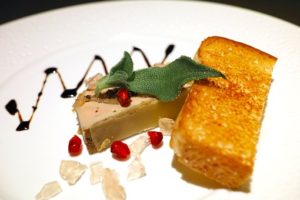
Les escargots – snails.
It doesn’t get more French than this! Escargots are a delicacy for special occasions. The secret to great ‘escargots’ lies in the garlic & parsley butter spread which covers the escargots.
Les escargots recipe
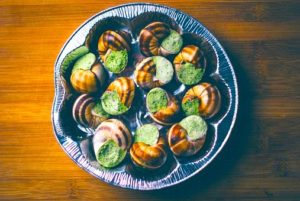
Les huitres – oysters.
Chilled oysters and French Christmas go hand in hand. The French don’t hold back on the spending when it comes to their Christmas meal, and although oysters are expensive, you will almost always find oysters being served at a French Christmas dinner table. Although there are many recipes when it comes to oysters, they are most often simply served raw, in their shell, on a bed of ice, with just a twist of lemon and with a white wine of exception, such as a Sancerre, a Muscadet, a Chablis, or a Riesling to bring out the flavor.
Choosing an excellent wine to enjoy your oysters is crucial!
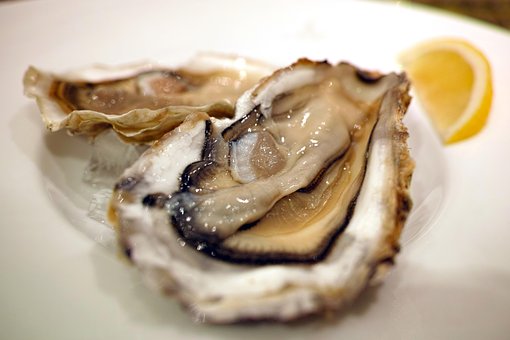
Le saumon fumé – smoked salmon.
Smoked salmon is often served on small toasts, or as canapés, and accompanied by white wine such as Pouilly-fumé or Quincy from the Loire region. Salmon will have been carefully selected for its quality.
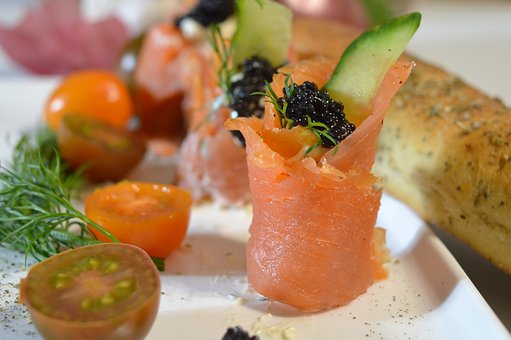
Les coquilles Saint-Jacques.
One of the highlights of the meal are the delicate and luxurious coquilles Saint-Jacques. They are most often served in a simple creamy sauce.
Les coquilles Saint-Jacques recipe
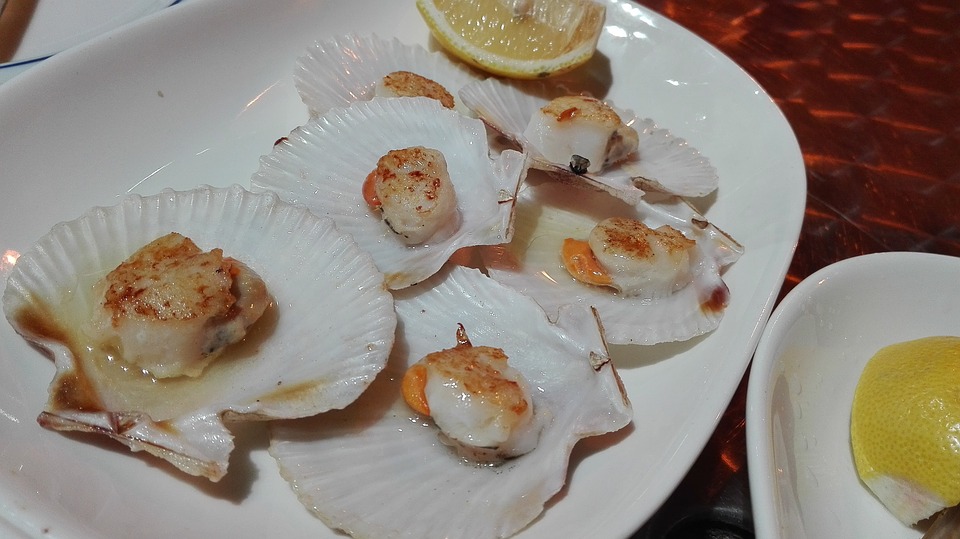
Les fruits de mer – seafood.
Seafood is an important part of the French Christmas meal, and will be served before the main course meat dish. Lobster is often served either as part of a seafood platter or on its own with a butter sauce. Seafood will be served, boiled to perfection, as to retain natural flavor. Here again a slice of lemon will be all that is needed to add to the delicious selection of fine seafood. Seafood is never served fried in France.
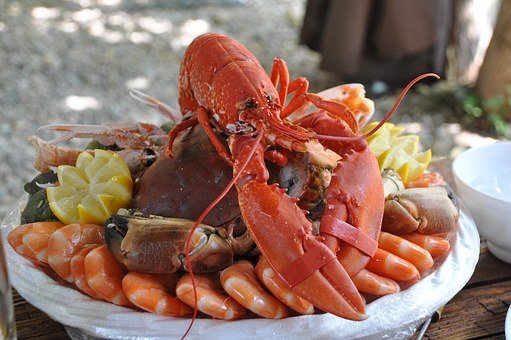
As an Amazon Associate we earn from qualifying purchases.
Le plat principal. The main course.
Next up to your French Christmas dinner will be the main course. The main course would often be “une dinde aux marrons” – turkey with chestnut stuffing. Other typical main course meat dishes would be “duck” – canard, “chapon” – capon, “pintade” – guinea fowl, “faisant” – pheasant or “une oie” a goose. The main course will always be a meat served with seasonal vegetables. Typical side dishes also include scalloped potatoes -“gratin dauphinois”, chestnuts and green beans.
La dinde aux marrons. Turkey with chestnuts.
First served at the Christmas table under French king Charles VII, 1697-1745, it remains to this day a symbol of family gathering at Christmas.
La dinde aux marrons recipe.
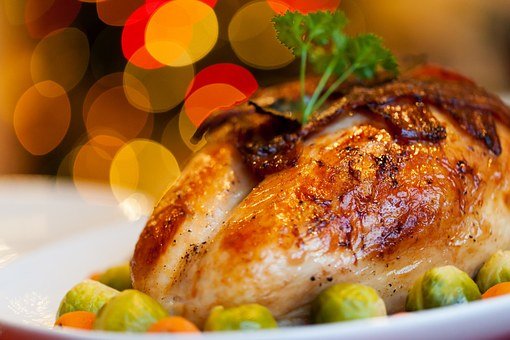
Le canard – duck.
Duck is sometimes served instead of turkey. Magret de canard, canard à l’orange or canard confit are some of the ways you would find duck being served.
Le canard à l'orange recipe.
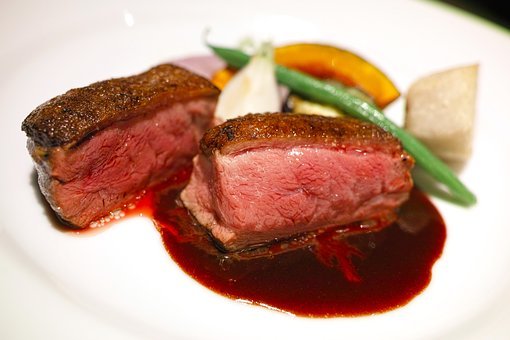
Le plateau de fromages. The cheese platter
A large cheese platter is essential before moving on to dessert. Cheeses will have been carefully selected for their quality and will be served simply with freshly-baked bread. The French do not serve cheese with either crackers, fruits, jams or nuts. It is preferable to have an odd number of cheeses on your platter. Be sure to include a soft cheese, a hard cheese and a blue cheese or a goat’s cheese. There are hundreds and hundreds of different types of cheeses to chose from, so the options are wide open when it comes to selecting which cheeses you wish to include in your Christmas platter. And again, quality is key when choosing your bread to accompany the cheese.
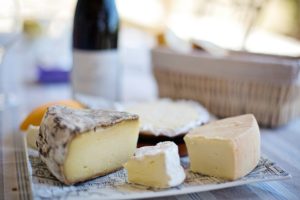
Le dessert. Dessert.
La buche de Noël – the Yule log.
The “buche de Noël” is a must for dessert. No French Christmas dinner is complete without “la buche”, which is a yule log-shaped sponge cake filled with a butter cream.
The Yule log was a Christmas tradition even before it became a dessert. Back in medieval days, it was the custom to choose the biggest and best log that could be found, as it was picked so that it would burn in the chimney for as long as possible throughout Christmas eve, as a celebration of the winter solstice. Over the years, as less and less French households had large enough chimneys to burn a huge log, the tradition evolved into a dessert creation which is now an integral part of the French Christmas meal.
These days there are many different recipes for the buche de Noël. In fact they get very creative, ranging from ice cream buche to elaborate exquisite creations by Michelin starred chefs.
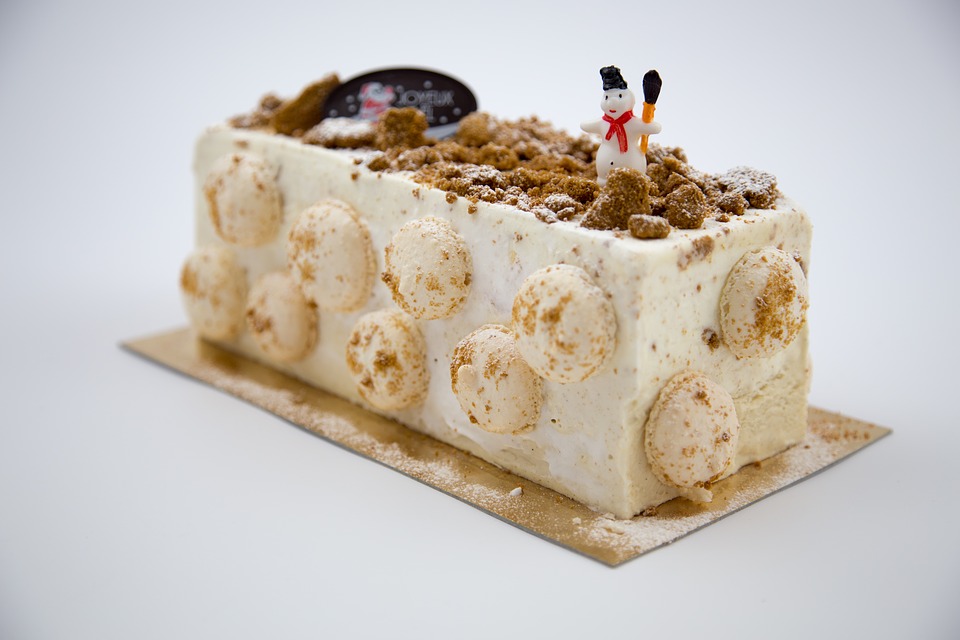
La buche de Noël recipe.
Les truffes au chocolat – chocolate truffles
In case you are still a little hungry, why not end your meal, with some delicious and delicate “truffes au chocolat”. These are often homemade with fine chocolate and they are served at the end of the meal with a digestif.

Les truffes au chocolat recipe.
Le digestif.
The final touch to your French Christmas dinner will be a digestif. It is a strong liqueur such as Armagnac, Cognac, Calvados or eau de vie, intended to help you digest the sumptuous feast you have just enjoyed. A digestif is stronger in alcohol than an aperitif and is not a sweet a liqueur.

As an Amazon Associate we earn from qualifying purchases.
